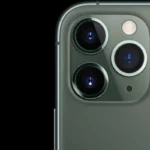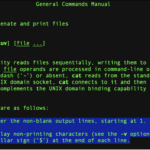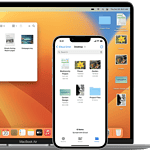Modern flashlights offer more than just basic illumination. The ability to adjust beam focus transforms a standard flashlight into a versatile lighting tool for any situation. Adjustable focus flashlights can switch between a wide flood beam for close-up tasks and a concentrated spotlight that reaches up to 300 yards.
The technology behind focus beam flashlights has advanced significantly. Many models now feature dual-reflector systems and sliding mechanisms that provide smooth transitions between beam patterns. These innovations give users precise control over their light output without sacrificing brightness or battery life.
🔦 What Are Flashlight Focus Beams?
Starting with iOS 18, Apple introduced a major upgrade to the iPhone’s flashlight, allowing users to adjust not only brightness but also the beam focus — meaning you can make the light wider or narrower, depending on your needs.
- Narrow beam → Focused, farther-reaching light (ideal for dark outdoor use).
- Wide beam → Softer, broader light (better for close-up or indoor use).
(Sources: AppleInsider, Tom’s Guide, iOS GadgetHacks)
📱 Supported iPhone Models
The flashlight focus feature is available only on iPhones with a multi-LED flash array — mainly those with Dynamic Island and Adaptive True Tone Flash hardware.
✅ Supported Models (as of iOS 18):
- iPhone 15 Pro and 15 Pro Max
- iPhone 16, 16 Plus, 16 Pro, and 16 Pro Max
⚠️ Not Supported:
- iPhone SE series
- iPhone 14 and earlier (no multi-LED adaptive flash hardware)
(Source: MacObserver)
🪄 How to Adjust Flashlight Focus and Brightness
Option 1: From the Lock Screen or Control Center
- Wake your iPhone (press Side or Tap to Wake).
- Press and hold the Flashlight icon on the Lock Screen or in Control Center.
- You’ll see a new circular slider interface appear.
- Slide up/down to adjust brightness.
- Slide left/right (or use the focus ring) to adjust beam width:
- Move right for a wider, softer beam.
- Move left for a narrow, concentrated beam.
You’ll see a live preview animation showing the beam expanding or narrowing.
Option 2: Using Siri
You can also control it hands-free:
- “Hey Siri, make the flashlight brighter.”
- “Hey Siri, narrow the flashlight beam.”
- “Hey Siri, widen the flashlight beam.”
(Siri commands supported on iOS 18.1 and later.)
💡 Pro Tips
- Use narrow focus outdoors or when you need to illuminate something far away.
- Use wide focus indoors or for softer lighting (e.g., reading in the dark).
- You can combine brightness and focus adjustments for precision control.
- The flashlight remembers your last setting until you change it again.
🧰 Troubleshooting
If you can’t adjust the beam:
- Ensure your iPhone is updated to iOS 18 or later.
- Check that your model supports Adaptive True Tone Flash.
- Restart your iPhone if the focus ring doesn’t appear.
- If still unavailable, it may be a model limitation — this feature is not present on non‑Pro models before iPhone 16.
🧠 Summary
| Feature | Description | How to Adjust |
|---|---|---|
| Brightness | Controls light intensity | Swipe up/down |
| Focus Beam | Controls beam width (narrow or wide) | Swipe left/right |
| Supported Devices | iPhone 15 Pro series, iPhone 16 series | — |
Key Takeaways
- Adjustable focus beams provide versatility for both close-range and long-distance lighting needs
- Advanced reflector systems enable smooth transitions between flood and spot lighting
- Focus beam technology helps optimize battery life by matching light output to specific tasks
Understanding Flashlight Focus Beams
Flashlight beams vary in their focus capabilities, from tight spots for long-distance visibility to wide floods for area illumination, with modern technology enabling precise control over beam patterns and intensity.
Fundamentals of Flashlight Beams
Flashlight beams consist of two key measurements: lumens and candela. Lumens indicate total light output, while candela measures beam intensity at the center.
Beam patterns fall into two main categories: spot beams and flood beams. Spot beams concentrate light into a narrow path for maximum throw distance. Flood beams spread light across a wider area for close-range visibility.
Most flashlights produce a central hotspot surrounded by a dimmer spill area. The ratio between these elements affects the light’s practical uses.
Technological Advancements in Flashlight Design
Modern flashlights feature adjustable focus systems that transform beam patterns. Users can twist or slide the head to move the LED relative to the reflector.
Advanced reflector designs use precision-cut surfaces to shape light. Orange peel texturing smooths beam artifacts, while smooth reflectors maximize throw distance.
LED technology continues to evolve, with new emitters offering improved efficiency. The Osram W1 LED, with its 1mm² surface area, produces extremely focused beams.
Flashlights in Search and Rescue
Search and rescue operations require flashlights with 300+ meter beam distances. High candela ratings help spot reflective objects at extreme ranges.
Dual-beam systems let rescuers switch between spot and flood modes. Spot beams scan distant areas, while flood beams light up nearby terrain for safe movement.
Key specifications for SAR flashlights:
- Minimum 1000 lumens output
- 300+ meter throw distance
- Water/impact resistance
- Extended runtime
- Quick mode switching
Frequently Asked Questions
Flashlight beam focus capabilities enable users to adjust light patterns and intensities for specific needs, with various mechanisms and features affecting performance and usability.
How do adjustable focus flashlight beams work?
Adjustable focus flashlights use a sliding mechanism that moves the reflector or lens relative to the LED light source. The beam narrows when the reflector moves forward, creating a concentrated spotlight.
The focusing system typically consists of a parabolic reflector and optical lens that work together to shape the light output. Users can twist or slide the flashlight head to adjust the beam pattern from flood to spot.
What factors should be considered when purchasing a high-focus beam flashlight?
Build quality and waterproofing help ensure reliable operation in outdoor conditions. A high-quality LED and reflector system produces better beam characteristics.
Battery compatibility and runtime affect practical usability. Some models offer multiple power options like rechargeable and disposable batteries.
The beam distance rating in meters indicates how far the light will reach. Look for candela measurements that show beam intensity at the center point.
What is the difference between a fixed and a focusable beam in flashlights?
Fixed beam flashlights have a preset focus that cannot be adjusted. These lights maintain consistent beam patterns and are often more durable with fewer moving parts.
Focusable beam flashlights let users modify the light spread. The adjustable focus provides versatility for both close-up flood lighting and long-distance spot beams.
How does one properly maintain a flashlight with focus beam capabilities?
Clean the lens and reflector surfaces regularly with a soft microfiber cloth. Keep the focusing mechanism free of dirt and debris that could affect smooth operation.
Check and lubricate O-rings periodically to maintain water resistance. Store the flashlight in a dry place when not in use.
What are the benefits of a rechargeable flashlight with a focus beam?
Rechargeable models reduce battery waste and long-term operating costs. Modern lithium-ion batteries provide consistent power output throughout the discharge cycle.
USB charging capability adds convenience for regular users. Many rechargeable models include battery level indicators.
How do flashlight beam focus mechanisms affect battery life?
Tight spot beams typically draw more power than flood beam settings. The focused beam concentrates energy into a smaller area, which can increase power consumption.
Battery drain varies based on the chosen focus position and brightness level. Some models include power management features that optimize runtime at different focus settings.







